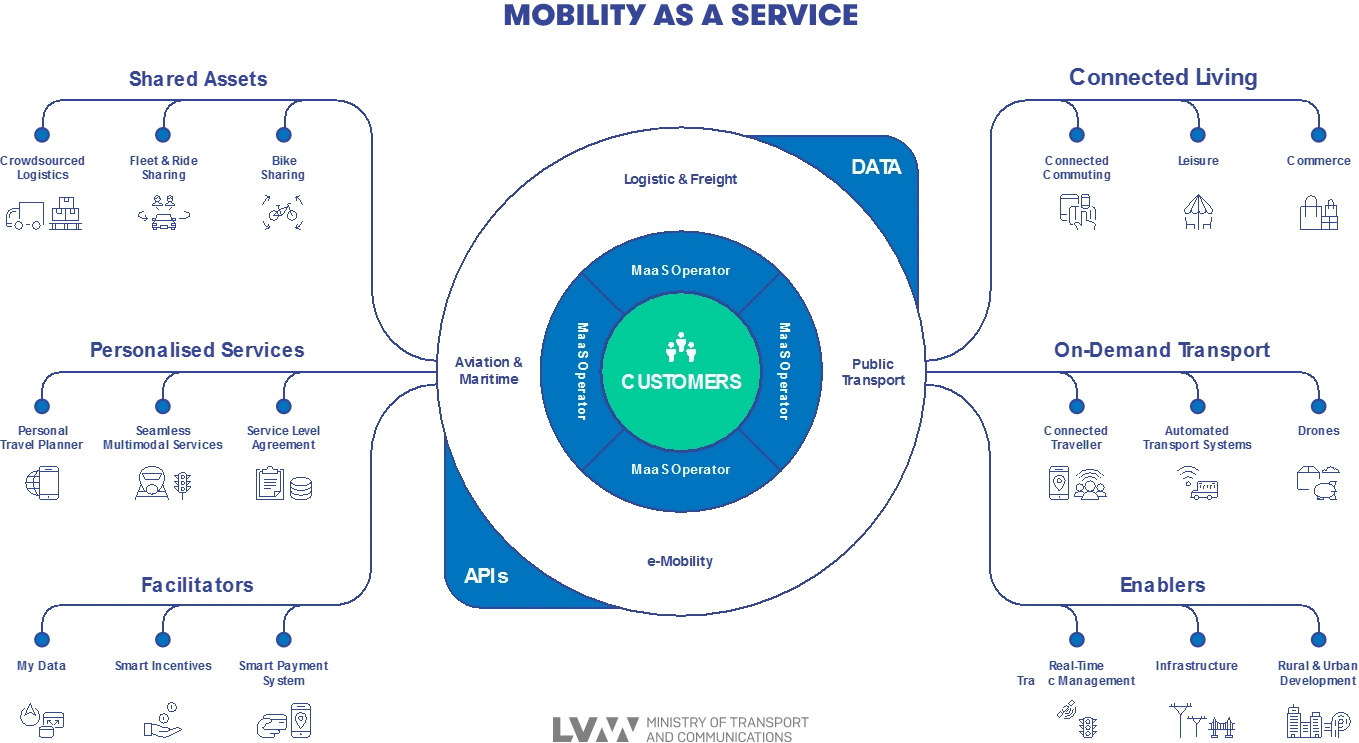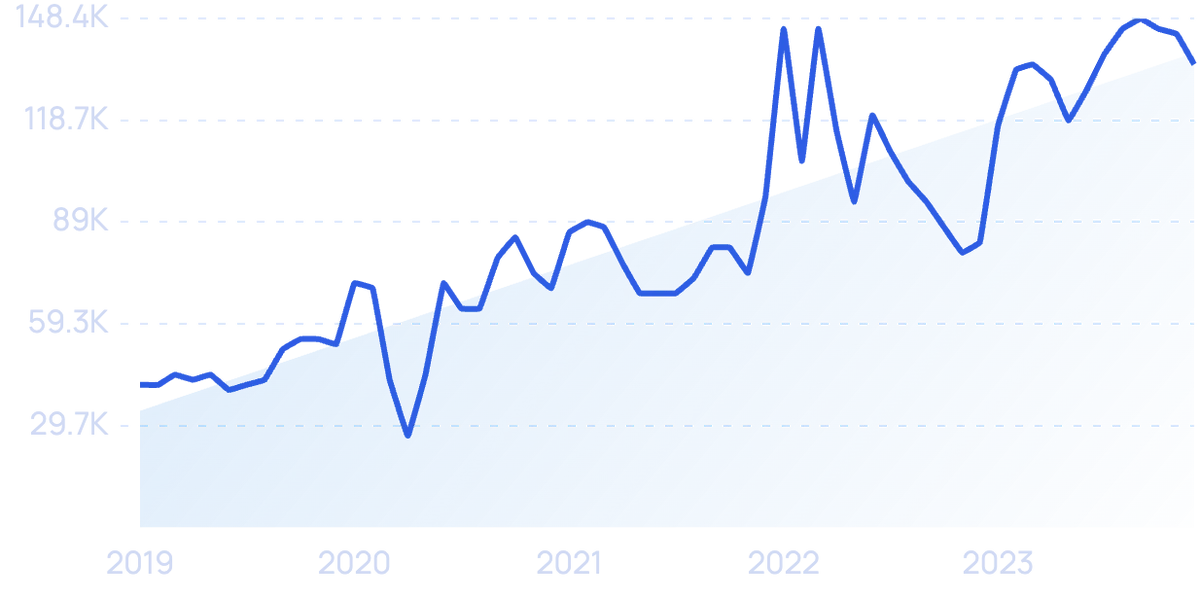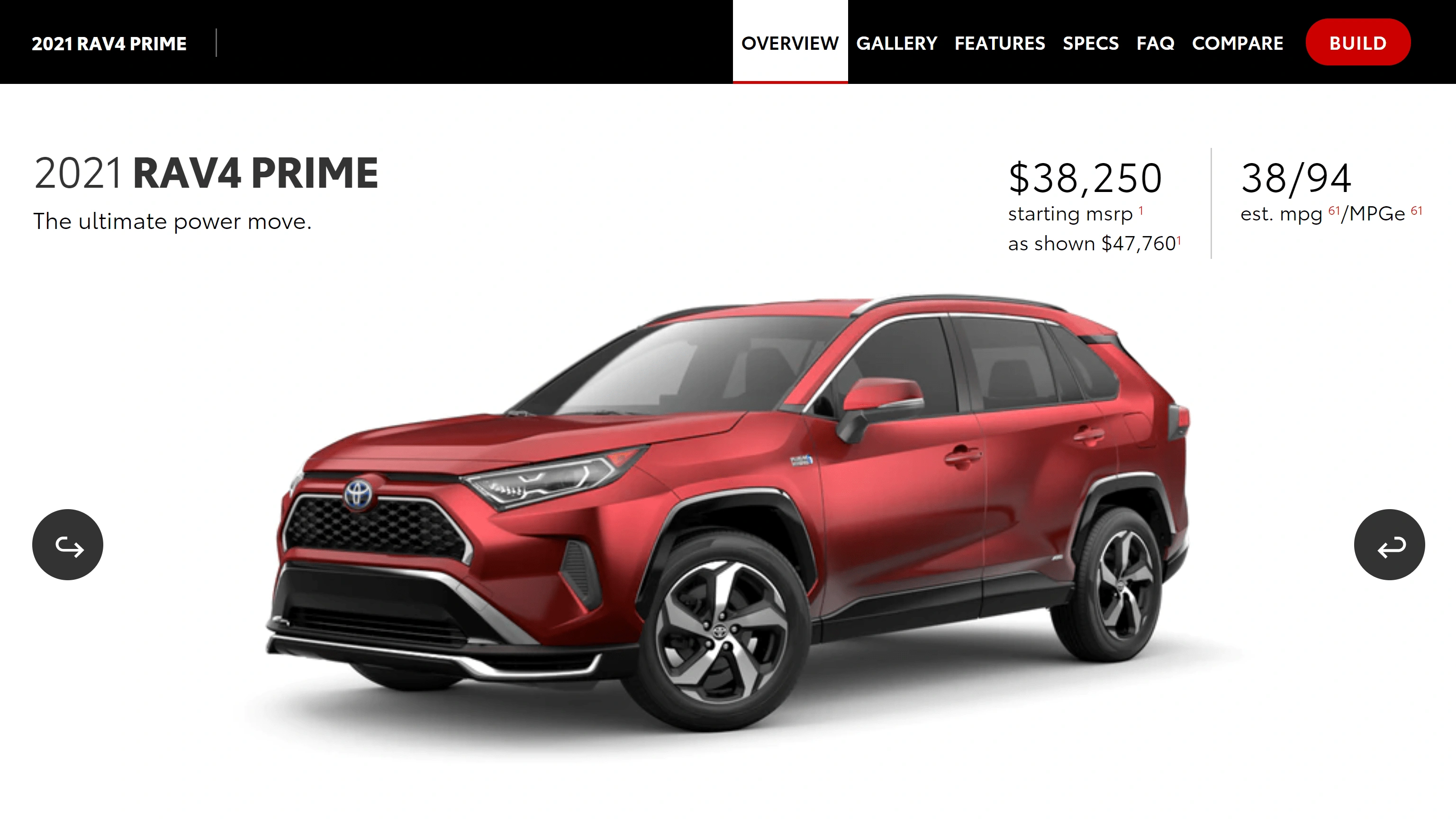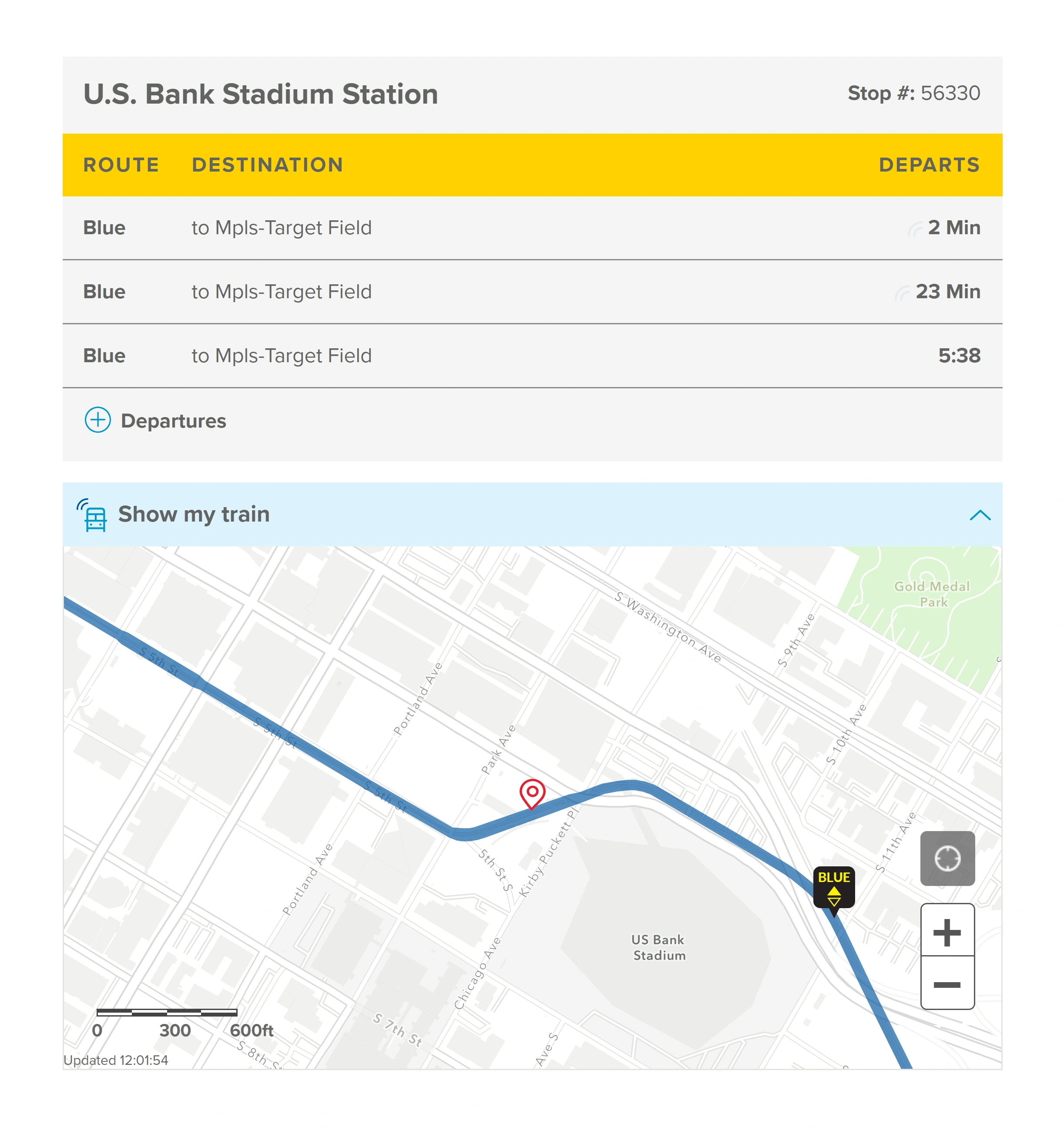
7 Key Transportation Industry Trends (2025-2029)
You may also like:
The global transportation industry is predicted to grow at a CAGR of 5.4%, reaching a value of $11.1 trillion by 2030.
Though a positive outlook overall, the growth of the industry is much less robust than pre-pandemic estimates of 19.8% growth.
Across many sectors in the transportation industry (including logistics, rail, trucking, infrastructure, and passenger vehicles) there are trends in technology and micromobility that will likely shift the way we think about transportation in the coming years.
Keep reading to learn more about the important trends in the transportation and logistics industry for 2025 and beyond.
1. MaaS Goes Mainstream
The MaaS Alliance defines MaaS as an “integration of various forms of transport services into a single mobility service accessible on demand”.
With MaaS becoming a more notable trend in transportation, MaaS revenues are projected to reach $1 trillion by 2030.
A major tenant of MaaS is integrating multimodal transportation that focuses on the customer’s destination rather than the mode of transportation.
MaaS also seeks to provide demand information, transport, and payment through a single platform.
In cities, this means people will have more access to real-time data to make informed choices about their mode of transportation on any given trip while being able to pay using a single platform.
Finnish Ministry of Transport and Communications summary of Mobility as a Service from SFMCON.
What is driving this shift towards MaaS?
The UN predicts that urbanization will only increase in the coming years, with 68% of the world population projected to live in urban areas by 2050.
Yet the transportation infrastructure in place is struggling to provide mobility to those who currently live in cities.
In fact, it’s estimated that the US loses $70 billion a year due to congestion alone.
Also, traffic congestion has been shown to create pollution that negatively impacts mortality and emissions that hurt the environment.
In a recent report by the policy organization Transport For America, they argue that rather than widening roads or expanding urban sprawl, truly addressing the root cause of congestion would mean using technology to “measure the time, speed, and convenience of travel by all modes of transportation...investments that make travel more efficient in real terms instead of investments that simply encourage more driving”.
In other words, investments in infrastructure and technology encourage the efficient use of transit.
MaaS is one of those technologies.
Flexible and data-driven transportation like MaaS can mitigate the issues around traffic congestion and environmental concerns all while providing a better value proposition for businesses.
(Not to mention saving users up to $5,600 annually.)
MaaS apps and solutions have already begun to pick up steam.
Moovit is an app that plans journeys across multiple modes of transportation in cities and allows local transit to customize the interface and collect data.
Want to Spy on Your Competition?
Explore competitors’ website traffic stats, discover growth points, and expand your market share.
2. Increased Last-Mile Delivery Efficiency
E-commerce market exceeded $4.8 trillion in 2023.
And Amazon Prime Day sales hit $14.2 billion in 2024, with over 180 million shoppers participating in the sale.
In fact, last-mile delivery market is expected to expand at a CAGR of 20.4% from 2023 to 2030.
Searches for “last mile” have increased 71% in the last 5 years.
The last mile in transportation is the final leg of a good’s transport directly to the door of a consumer.
In past years, the major portion of transportation was made up of shipping from manufacturers to warehouses, and from fulfillment warehouses to stores.
Today, the final mile of a good’s transport now represents 41% to 53% of the cost of transportation.
For consumers, this means a more convenient shopping experience.
But for businesses and logistics companies, this represents a growing expense.
This is an expense that will create a need for more efficient methods that utilize technology like AI, autonomous vehicles, and crowdsourcing.
Autonomous vehicles (including drones) are one way the transportation and logistics industry is reducing the cost of last-mile deliveries.
A well-known example of crowdsourcing technology for last-mile deliveries are companies like Uber Eats, Postmates, and Cornershop.
3. The Transportation Industry Invests in Electric Vehicles
Though the push for electrifying commercial and passenger vehicles is not brand new, 2025 will likely be a crucial year for electric vehicle growth.
Electric vehicle sales increased by 18% in 2023.
One reason for this growth is an increasing number of diverse electric vehicle options:
Around 30 EVs from 21 brands hit the market in 2021.
One emerging option is the plug-in hybrid, a vehicle that can run either as a hybrid or as a fully electric vehicle.
Searches for “plug-in hybrid” have increased 275% over the last 5 years.
Toyota is among the automakers expanding their EV offerings, announcing a RAV4 that is a plug-in hybrid SUV, a formerly uncommon configuration for large vehicles that aims to capture a new market segment.
Toyota's new plug-in hybrid RAV4 SUV.
The push towards electric also includes commercial transportation vehicles like vans and semi-trucks.
As large freight trucks are responsible for 26% of all highway-based fuel consumption, there’s growing support for commercial electric vehicles.
The UPS ordered 10,000 electric fleet vehicles from electric truck company Arrival in 2020.
Search interest in “arrival limited” increased by 144% over 5 years.
The global electric truck industry will experience a CAGR of 36.4% from 2023-2030.
Among other modes of transport, all-electric airplanes and electric ships are further on the horizon, with some estimates projecting fairly mainstream use by 2030.
Electric ships may be relatively commonplace by 2030.
4. Renewed focus on transportation accessibility
The gaps in public transport access and mobility technology often disproportionately affect underserved communities.
Low-income and minority communities are more likely to have lower accessibility to transportation and greater exposure to pollution.
For those with disabilities, transportation services can be much more difficult to access.
One study found that it took 5x longer to wait for wheel-chair accessible vehicles through rideshare apps. And these were only successful at all 55% of the time.
As the body of research grows, the importance of inclusive mobility and equitable transportation will become more prevalent — but what changes can we expect?
Emerging technologies that enable micro-mobility are one of the key players in creating more equitable transportation.
For example, the scooter-sharing app, Tier names the goal of empowering people to move in a frictionless and inclusive way.
Shifts towards more equitable transportation may also see expanded public transportation options, especially rail.
A study published in the Journal of Public Transportation evaluating the transit equity between low-income and others’ access to transport found that cities with the most equity had both rail transit and fixed-route bus service.
However, the success of both these emerging trends in addressing mobility inequality relies on utilizing data that includes underserved populations.
The collection of this data is the mission of the Impact of Transformational Technologies on Underserved Populations project.
The project had a goal of “[developing] a playbook with guidance on corrective actions with data, methods, and metrics to achieve inclusive mobility”.
Additionally, research tools like the equitable transit-oriented development (eTOD) map provide a visualization of how access to transit creates affordable housing and sustainable communities.
Searches for “eTOD” have increased 223% in the last 5 years.
5. Major Workforce Shifts in the Trucking Sector
A large topic of discussion in the trucking sector is the major labor shortage.
In 2023, the industry was short over 3 million drivers – approximately 7% of total positions.
Despite an increased need for transport during the pandemic, companies lost even more drivers, resulting in an employee shortage.
Truck driver shortages mapped out.
One possible cause is that the average truck driver is in their 40s, meaning they reach retirement age more frequently than other workforces.
In addition, the work conditions that require long solitary hours and assumptions about the role turn many away from the work, especially women.
The ATA’s recommended efforts to combat this include increasing driver pay and home time, lowering the driver age, initiatives to change the image of truckers, and supply chain improvements.
6. Increasing Interest in Active Transportation
Active transportation is the term for the many different kinds of human-powered transportation like walking, biking, and scootering.
After the huge surge in cycling during the pandemic, cities are still adding more bike lanes to encourage micro-mobility.
As a part of New York’s Vision Zero bill, the city added bike lanes to the Brooklyn and Queensboro bridges.
Though not the same as powered transportation, the US Department of Transportation asserts that it is still the responsibility of the transportation infrastructure and industry to design for active transportation opportunities.
This includes designing complete streets that enable many modes of travel with bike lanes and sidewalks.
On a large scale, this may mean designing for complete trips.
Several governmental initiatives are leading the way toward complete streets and active transportation.
In January 2021, the US Department of Transportation awarded $38 billion through its Complete Trip – ITS4US Deployment Program.
The projects selected “enable communities to showcase innovative business partnerships, technologies, and practices that promote independent mobility for all”.
The Moving Forward Act supports increased accountability for pedestrian and cyclist injuries.
7. Technology Improves Overall Transportation Efficiency
With traffic congestion high, costs for delivery rising, and a year that underscored the unpredictability of travel patterns, there is a demand for technology that can help many sectors of transportation work more efficiently and react to real-time changes in conditions.
For example, Minneapolis launched its NexTrip system.
Minnesota's NexTrip system in action.
This system incorporates a prediction algorithm that works on data over time and can adapt to unexpected events.
LA Metro launched a Metro Micro service that offers on-demand in areas where it had been hard to find fixed routes.
Demand-responsive transport, also known as micro-transit, provides a type of transit that can be scheduled.
This type of transit is more flexible than scheduled routes but improves congestion more than ride-hailing services.
For the trucking and mass delivery industry, rises in costs are also driving technological change.
Peloton Technology uses telematics, or direct vehicle-to-vehicle (V2V) communication, between trucks on the road to organize trucks into formations following closely behind each other.
This method, called platooning, saves more than 7% in fuel costs.
Large freight trucks are now more commonly equipped with IoT sensors that can monitor the condition, stability, and location of the cargo.
For example, Geotab provides devices that connect commercial vehicles to the internet and provide data analytics to assist in fleet management.
Search interest in “geotab” has increased 418% over the last 10 years.
Shipping companies will also likely make use of big data and AI data processing offered by companies like Transmetrics to forecast shipping needs and plan efficient routes that minimize the risk of accidents.
Key Takeaways
That wraps up this list of important transportation industry trends.
Though each subsector is affected differently, overarching trends towards greater micromobility, transportation access, and efficiency technologies are happening throughout the industry. And over the long term, these should help the space grow.
Stop Guessing, Start Growing 🚀
Use real-time topic data to create content that resonates and brings results.
Share
Newsletter Signup
By clicking “Subscribe” you agree to Semrush Privacy Policy and consent to Semrush using your contact data for newsletter purposes
Written By


Josh is the Co-Founder and CTO of Exploding Topics. Josh has led Exploding Topics product development from the first line of co... Read more











